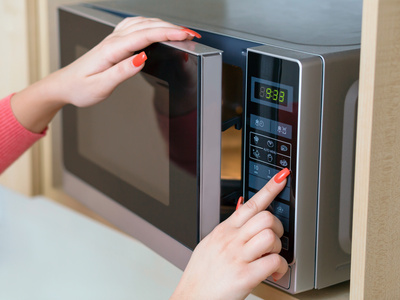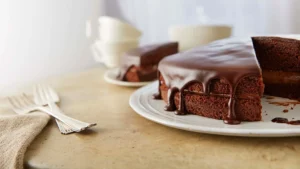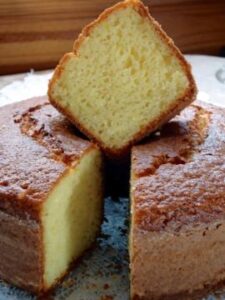
Your oven and stovetop recipes can be prepared in the microwave. The recipes won’t lose any flavor and you’ll save time. Check out our tips!
General Tips
- Please note that microwave cooking time is generally ¼ of the cooking time on a conventional stove.
- When you want to double a recipe, don’t double the time – just increase it by 50%.
- Use all recipe ingredients at room temperature: cold ingredients (milk, for example) can cause changes in cooking time.
- The amount of liquids (broths, water, wine) should be reduced during preparation, as liquids evaporate less in the microwave.
- In the microwave, the flavor of food becomes more pronounced. Reduce the seasoning, especially the salt. Add more seasoning after cooking if necessary.
- Does your microwave not brown food? To add color to some dishes, such as fish and meat, for example, use a little trick: brush ketchup, dark beer, paprika, paprika, mustard, butter, mayonnaise or beef broth on top. You can also cover the food with bacon slices, wrap it in a mixture of grated cheese and breadcrumbs or packaged soups. For cakes and desserts, use brown sugar, honey or jam.
- To thicken creams and sauces with cornstarch (cornstarch); add it only at the end of preparation, after the liquid has already been heated.
- Use larger containers than those you are used to using on a conventional stove, this prevents overflows.
Meat Tips
- Burgers are best when cooked with a browning sauce, which makes them taste as good as grilled.
- Poultry, meat and fish are foods that are naturally moist.
- Cooking time varies depending on the weight, size and thickness of the meat.
- Tough meats should be pierced with a fork, seasoned and placed in a microwave-safe container. They should be cooked on the defrost setting, as they require a longer cooking time. At the end of cooking, leave them on high for a few minutes.
- When seasoning, use a little salt to preserve the moisture and tenderness of the meat.
- Leave the part covered with fat facing down.
- Pieces of meat should be distributed with the thickest part facing out. Turn over halfway through.
- Filet mignon and other tender cuts should be cooked quickly on high heat to avoid drying them out. Thicker cuts can be cooked on medium heat.
- For ground beef, use medium power. Calculate about 8 minutes for 500 grams of meat. Always remember that the time may vary depending on the type of microwave.
- Bones and joints must be covered so they don’t burn and cook prematurely.
Bird Tips
- Chickens, ducks, and turkeys produce excellent results when cooked in the microwave, although small portions are easier to cook than whole birds.
- To speed up the cooking of poultry, use microwave-safe plastic bags.
- To roast poultry in pieces, place the thinner parts toward the center and the thicker parts toward the edges.
- Thin parts (like the wing tips, for example) should be covered so they don’t burn and get cooked too soon.
- The poultry is done when the meat is opaque and tender to the touch, and when it releases clear juices when pierced with a fork.
- Allow 10 minutes of rest after cooking the poultry.
Tips for Fish
- Whole fish should be pierced with a fork in the thickest parts.
- Fish fillets should be distributed in a single layer to ensure even cooking.
- Fish should be cooked on high power as it cooks quickly.
- They should not be overcooked so that the meat does not dry out.
- Also valid for shrimp, which when overcooked becomes hard.
Tips for Vegetables and Greens
- Vegetables and greens are wonderful when cooked in the microwave; they preserve their texture, maintain all their shine and freshness and do not lose their nutritional value.
- You need to use 3 tablespoons of water to cook 500 grams of vegetables. Season at the end of cooking. It is not recommended to prepare quantities greater than 500 grams of vegetables.
- If you prefer, cook the vegetables in plastic bags suitable for microwaves, always adding water as recommended and leaving a small hole in the plastic bag.
- Sautéed vegetables can also be prepared in covered containers to be cooked in their own steam.
- Broccoli and cauliflower, when not cooked in plastic bags, place them on a plate with the stalks facing outwards, because they are harder, and the florets, which are softer, in the center of the plate.
- Cooking carrots: Place 500 grams of carrots in a microwave-safe bowl with ½ cup (tea) of water and cook for about 5 minutes on high power.
- For thin-skinned vegetables such as tomatoes, beets, eggplants and potatoes, pierce them with a fork in a few places. This is an important step to eliminate the steam inside the vegetables.
- For 500 grams of canned vegetables, proceed as follows: drain, place in a container, cover with non-toxic plastic wrap and cook for 3 minutes.
Tips for Breads, Cakes, Cookies and Pies
- Cookies made in the microwave are only tasty if they are prepared with little butter or fat in the dough.
- Microwaved cakes are soft and moist.
- The baking dish should be lined with parchment paper and then covered or lidded.
- To prevent the cake from overflowing the pan, fill it with batter only halfway and use high power.
- Remove the cake from the microwave while it is still slightly raw (the edges should be coming away from the pan, but the center should still be moist) and let it rest for a few minutes to finish cooking.
- Always unmold the cake after it has cooled completely.
- If your microwave is one of those simple ones that doesn’t have a combined system, add some color to your cakes: sprinkle the dough with crumbled cookies, chocolate sprinkles, coconut flakes or brush with jam.
- Pizza dough should be made with baking powder. Bake the dough and then add the sauce and toppings. Cook on low heat just to melt the cheese.
- Breads should also be prepared with chemical yeast. Use the microwave to ferment 500 grams of dough: calculate 4 minutes on low power. Let it rest for 10 minutes, turn it on for another 2 minutes on low power and let it rest for another 10 minutes.
- Like pizzas and breads, pies should also be prepared with baking powder. To prepare the pie: first put the dough in the microwave and only then add the filling.
- Do not try to adapt a recipe that uses biological yeast, as the preparation method and quantities of yeast are very different.
Mom’s Tips
Microwaves do not pose any health risks and even help us save time in our daily lives.
Avoid using plastic lids to cover food; use paper towels.
Wipe the inside of your microwave with paper towels after each use to remove water vapor. Clean your microwave once a week or every 15 days.
Source: https://www.receitasdemae.com.br/receitas/micro-ondas-dicas-da-hora/


